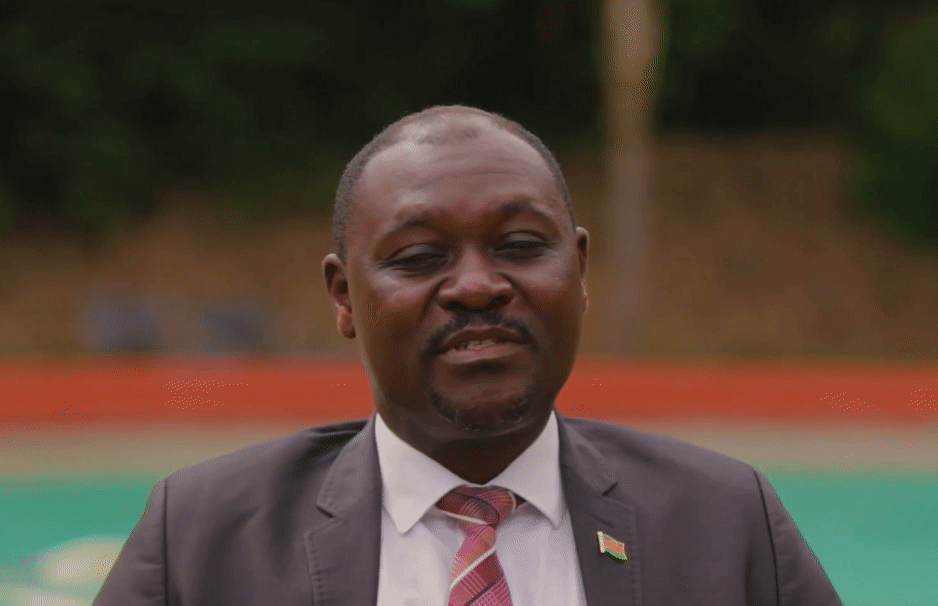
Blantyre Prevention Strategy
There is untapped potential for stronger HIV prevention.

What is the Blantyre Prevention Strategy?
The Blantyre Prevention Strategy was conceived and co-developed at every step with the Malawian government, local stakeholders at the district and national levels, and global partners. Working together, we have seen BPS bring cohesion to an otherwise fragmented HIV prevention landscape, systematically strengthening and raising up the local leadership of this rapidly expanding urban district of over a million people.

Before BPS
Part of the reason for this diversity of views is that HIV prevention consists of many interventions targeting different risk groups, ages, and demographics. In the absence of a systemic approach, this leads to fragmentation across partners and lack of sustainability.
“Before BPS, as a district, we were doing response activities focusing at facility level. We were not involving the communities. By then, we were also not using data; we were just doing it for the sake of implementing activities. And there was no coordination with other partners; everyone was doing activities on their own, according to their needs. We did not even involve the community let alone focus much on active surveillance of HIV infections. We were doing passive surveillance.”
Loncy Sajeni
Deputy District
Environmental Health
Officer, Blantyre District


Blantyre is one of many districts and regions with a growing urban center that has struggled with these and other issues including weak data systems for HIV prevention and insufficient local data use, poor risk assessments and targeting, and inconsistent community demand.
We knew there must be a better way—one that leverages the trend towards health systems decentralization and that focuses on developing the functions needed to effectively prevent and respond to diseases—and reflects the best thinking from public health leaders in Malawi and around the world.
Developing a New Model in Blantyre
Since 2020, through BPS, an innovative and data-driven HIV prevention model has been fostered in Blantyre District, institutionalizing HIV prevention as a cohesive, effective, and sustainable country-led response with coordinated external support. BPS has supported the district in creating a coherent local management system that is able to deploy HIV prevention services and tools more effectively.
One way BPS has fostered that local system is by developing networks led by district and city health offices in local communities within the district that bring together political and community leaders, local governance and public health structures, public and private health clinics, community-based organizations, and civil society to address gaps in service delivery, demand generation, and health communications. These partners share data and work to solve challenges facing them.
In addition, BPS has been instilling district-level functions that enable the local response to:

Detect and target risk factors within, and services to, individual communities using timely and high-quality data.

Generate demand for HIV prevention by collecting community insights and raising local awareness.

Effectively deliver quality and accessible prevention products and interventions.

Support sustained use of prevention products through periods of risk.
BPS’s workstreams are organized along the HIV prevention cascade, but each play direct and indirect roles in strengthening the targeting, demand generation, and quality of HIV service delivery and access, as well as support continued use during risk periods. Across the Blantyre ecosystem, PEPFAR implementing partners, community-based organizations, facilities, the private sector, and other stakeholders have been part of the co-design and learning processes on many aspects of the BPS model and core program elements.
Some key elements of the program include:
-
A data pipeline that pulls together existing and new data sources into user-friendly dashboards in the Prevention and Adaptive Learning Management System (PALMS), PALMS, which supports data-driven decision making at the local and national levels. PALMS has become a lifeline to the district HIV prevention response and an integral part of every element of the BPS model. Most importantly, it has empowered District Coordinators and health management team to take ownership of its HIV response.
-
An Integrated Disease Surveillance and Response (IDSR) pilot that is embedding capacity within the district health office to identify infection HIV risks by geographical area and sub-population, improving intervention targeting. The pilot includes stakeholders from the community all the way to national levels, bringing a multi-level response that helps rapidly and effectively direct resources and services to identified populations.


“BPS is helping us do our jobs better and we are seeing coordination where there were previously fragmented responses among partners. BPS is improving engagement between district and city — shared data, shared responsibility.”
Dr. Gift Kawalazira
Director of Health and Social Services, Blantyre District

-
Grassroots community labs use human-centered design (HCD) methods to create communication channels between communities, the district and city health offices, and facilities to gather insights about HIV prevention service demand barriers and inform better programming. Insights around demand barriers for adolescent girls and young women (AGYW) inspired the introduction of PrEP Ambassadors – a peer-based model to drive PrEP demand at facilities – which also have supported increased service uptake of oral PrEP and improved linkages between facilities and communities. Referral data collected by PrEP Ambassadors and QI data collection processes at facilities indicates an increase in PrEP demand enrollment from AGYWs engaged by the PrEP Ambassadors, compared to other mobilizers.
-
The PrEPUp! Collaborative, the first quality improvement collaborative focused on PrEP, involves 23 participating facilities representing the public and private sectors, drop-in centers for key populations, and a university clinic. PrEPUp! has demonstrated that building district-based quality improvement capacity for implementation and leadership embedded into the district health office structure and including leadership by the district’s Quality Unit are key for successful sustainability and scale-up of HIV prevention products and services including oral PrEP.
-
Structural Risk Reduction Working Groups provide Blantyre City and District Councilors with education and training on HIV and related data to empower leadership within their communities. BPS trained City Councilors on data, HIV, and public health messaging, so they can better identify the structural risks that impede service delivery and uptake to limit the spread of HIV. By capacitating and empowering City Councilors, BPS achieved impressive impact in terms of knowledge gained and councilors’ involvement in HIV prevention activities. This low-cost approach can significantly amplify and advance the HIV prevention response at community and political levels. It is currently expanding to include District Councilors.
This new approach has led to notable changes in the way HIV prevention services are directed and delivered in Blantyre.
The Future of HIV Prevention:
Collaborative, Sustainable, and Replicable
BPS provides proof points that demonstrate how a new approach to HIV prevention embedded in a district-level system can advance global HIV goals and strategies.
It is defining and operationalizing key functions necessary for an effective, sustainable, district-led HIV prevention response and has produced rich learnings from Blantyre’s prevention programs that have meaningfully informed national plans. BPS is building a replicable model for district-based HIV prevention and embedding long-term functions for combating HIV for a country-led sustainable response.
In addition to improving service delivery for current prevention tools, the capabilities built by BPS will support better introduction and scale-up of future tools like injectable PrEP and efficiencies within the broader HIV prevention ecosystem. BPS systems investments will underpin the Malawi Injectable PrEP PathToScale Initiative, which seeks to understand how to deliver injectable PrEP to diverse populations in different delivery settings, and strengthen Malawi’s historic progress in fighting HIV by accelerating its response capacity with current and future prevention products.
In addition to breaking down silos within the HIV prevention space, the BPS approach is enabling broader government-led coordination and partnership building and community engagement that is strengthening of the whole health sector beyond HIV. Further, BPS is fostering new linkages between partners and within geographies to build multi-sectoral relationships resulting in joint action to address important issues in the community.
“Moving forward towards the elimination of HIV by 2030, we will need to have strong leadership in our districts, strong teams that can manage the HIV response and even any other pandemics as we have learnt through the years…The Blantyre Prevention Strategy is an excellent initiative…The workstreams that were prioritized for capacitation of the districts are key, and I would recommend replication or scale-up as we move towards sustainability of the HIV response in Malawi.”
DR. ROSE NYIRENDA,
DIRECTOR FOR THE DEPARTMENT OF HIV, STI, AND VIRAL HEPATITIS DIRECTORATE IN THE MINISTRY OF HEALTH

The BPS Consortium & Partner Entities
A Consortium of expert partners supports the government and implementation, including: Cooper/Smith, Population Services International and Family Health Services, UCSF-HealthQual, Pakachere Institute of Health and Development Communication, Kamuzu University of Health Sciences, Harvard University, and the MeSH Consortium (London School of Hygiene and Tropical Medicine and the UNC Malawi Project).
Additionally, BPS collaborates with other partners working in and supporting Blantyre including, the Clinton Health Access Initiative (CHAI), Fast-Track Cities, the U.S. President’s Emergency Plan for AIDS Relief (including the U.S. Agency for International Development and the Centers for Disease Control and Prevention) and its implementing partners (e.g. EGPAF, FHI 360, JHPIEGO, MACRO, iTECH), and a number of local civil society, community, and service delivery partners (e.g. the Blantyre Civil Society Network, CEDEP, Lighthouse, MANASO, Rainbow Alliance, and Umunthu Foundation).
Together we are strengthening the entire ecosystem in Blantyre and make the entire HIV prevention response better, more resilient, and capable of doing what it needs to do to bring down new infections.